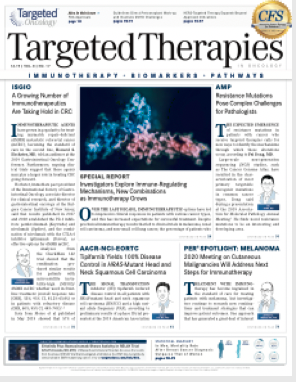Shifting the Focus to Newer Technologies for Immunotherapy Response
It is clear that cancer immunotherapy has progressed dramatically over the past 10 years, with over 20 FDA approvals for immune checkpoint receptor inhibitors targeting PD-1 and CTLA-4. However, we are still awaiting the next major advance in these inhibitory receptor targets that yields clinical benefit. In the meantime, additional advances have appeared.
Robert L. Ferris, MD, PhD

Robert L. Ferris, MD, PhD
It is clear that cancer mmunotherapy has progressed dramatically over the past 10 years, with over 20 FDA approvals for immune checkpoint receptor inhibitors targeting PD-1 and CTLA-4. However, we are still awaiting the next major advance in these inhibitory receptor targets that yields clinical benefit. In the meantime, additional advances have appeared.
Given the success of cellular therapies such as chimeric antigen receptor (CAR) T cell and solid tumor infiltrating lymphocyte (TIL) therapies, gene modification strategies have led to expansion beyond T cells to natural killer cell therapies, both of which are under intense evaluation. Furthermore, harnessing oncolytic viral therapy to induce immunogenic cell death, with the payload of various gene expression strategies, can modulate the immune microenvironment of the tumor. There are intriguing data of intralesional approaches as well as systemic delivery of various innate and adaptive immunotherapies that have been presented at various meetings over the preceding year.
Furthermore, analysis of tissues for immune biomarkers of response was eloquently discussed by Ronald N. Germain, MD, PhD, a distinguished investigator with the National Institutes of Health, at the Society for Immunotherapy of Cancer’s 34th Annual Meeting and Pre-Conference Program. He reminded us that single-cell sequencing strategies may be informative, but also can only sequence the cell type in the digested specimen, and many cell types are lost qualitatively or quantitatively. Therefore, new technologies are focusing on in situ tissue sections for RNA sequencing, and geospatial distribution and associations between cell types and immune markers.
These data reinforced how active and exciting the field of cancer immunotherapy has become, drawing in practitioners from an increasing area of clinical expertise including pharmacists and mid-level providers who are becoming increasingly active in management of toxicities. Thereare also efforts to educate different types of clinicians about adverse-event profiles and toxicity management. We look forward to continued progress in the field of immunotherapy and overcoming the barriers that still exist in this still-early field of cancer immunotherapy.
Reference:
Germain RN. Using Advanced Multiplex Optical Imaging Methods to Study the Tumor Micro-environment and Response to Cancer Immunotherapy. Presented at: Society for Immunotherapy of Cancer 34th Annual Meeting and Pre-Conference Program; November 6-10, 2019; National Harbor, Maryland.

Survivorship Care Promotes Evidence-Based Approaches for Quality of Life and Beyond
March 21st 2025Frank J. Penedo, PhD, explains the challenges of survivorship care for patients with cancer and how he implements programs to support patients’ emotional, physical, and practical needs.
Read More